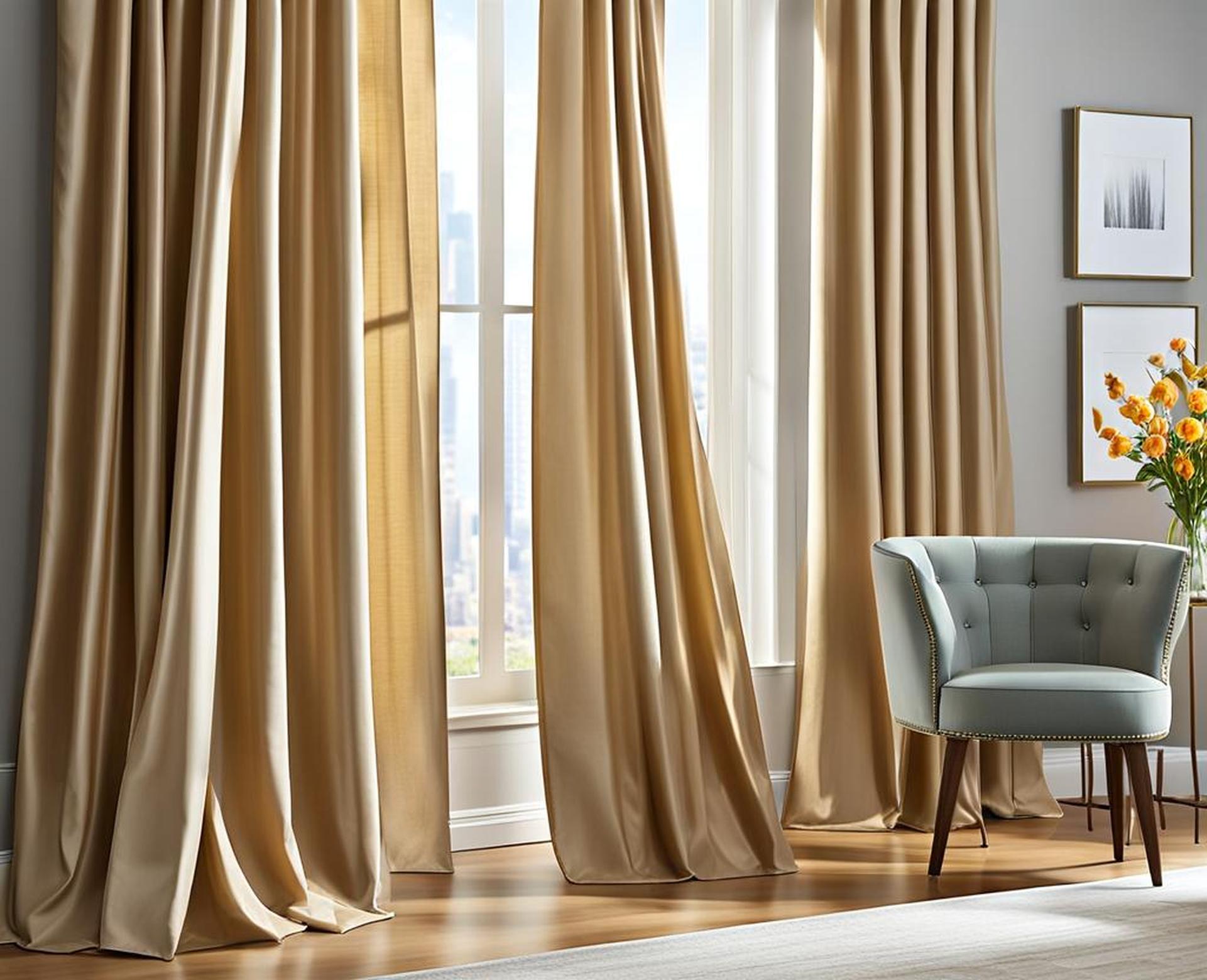When looking to add new curtains or drapes to any room, one important decision is determining the right number of clips to use per panel. Properly hanging curtains with the ideal clip amount enhances the overall window styling and achieves the perfect drape effect you desire. Too few clips leads to curtains that sag, drape unevenly, and fail to maintain their shape. On the other end of the spectrum, too many clips makes fabric look stiff, tightly pulled, and overly formal. The goal is to have beautifully flowing drapes that gracefully cascade while still keeping their structure.
That’s why calculating the optimal clip quantity for your specific curtains is so important. The curtains should hang nicely from each clip without pulling too tight or drooping too low between clips. Follow our simple guide to determine the ideal clips per panel for any curtain style!
Factors That Determine Curtain Clip Amount
Curtain Panel Width
The width of your curtain panel from left to right is a key factor in choosing clip amount. Wider curtain panels need more clips to properly support the weight across the entire width. Sheer lightweight panels may only be 24-36 inches across, requiring just a few clips for that narrow width. More substantial curtains could be 72 inches wide or even wider, demanding more clips to prevent sagging under all that fabric weight.
First step is to accurately measure your curtain panel width in inches so you can use that dimension to calculate clips spaced at set intervals across the full width.
Curtain Fabric Weight
The weight and thickness of the curtain fabric is another critical consideration for clip amounts. Lightweight, delicate fabrics like lace or sheer voile require fewer clips to gently hold them in place without pulling too tight. Heavy thick fabrics like velvet, brocade, or layered curtains require more frequent clips along the width to bear the weight and evenly distribute that substantial drape across your rod.

General Clip Guidelines
Clips Per Inch
As a general rule of thumb, standard clip spacing is 1 clip every 4-6 inches across the width of the panel. For medium to heavy weight fabrics, use 1 clip every 4 inches. Lightweight airy fabrics may only need 1 clip every 6 inches to have enough support.
End Clips
In addition to clips spaced across the width, you also need a clip at each far end of the curtain panel. Far end clips are important for evenly distributing the weight across the entire rod and preventing sagging on the outer edges.
Customizing Your Clip Amount
Calculations by Width
To customize clip amount for your specific curtain panels, simply measure the total width and divide by your desired clip spacing increment.
For example: You have a curtain panel that is 96 inches wide and want to space clips every 4 inches. 96 inches divided by 4 inches equals 24 clips total across the width.
Test Different Arrangements
We recommend draping your curtain on the rod before permanently installing the clips. Drape and arrange the fabric, then experiment with different clip spacings and amounts. Visually evaluate the appearance and adjust to your preference. This allows you to test out clip arrangements and make tweaks before finalizing placement.
Allow for Adjustments
When calculating and purchasing clips, get a few extras beyond your initial estimate. Having additional clips makes it easier to tweak your arrangement during testing. After settling on the optimal final amount, simply remove any unneeded extra clips.
Achieving an Ideal Drape
Formal Crisp Edges
Evenly spacing clips across the width in precise intervals creates crisp straight edges and angles in your curtains for a formal fine furnishings look. The military precision of perfectly spaced clips lends an elegant tailored style well suited for formal living spaces.
Informal Billowy Effect
For a more relaxed casual aesthetic, scatter clips randomly across the width for an informal billowy effect. The unpredictable variety of clip placement results in soft ruched gathering of fabric that cascades gracefully for a romantic lived-in style. It’s all about your decorative taste and mood.
Troubleshooting Problems
Too Few Clips
If you notice your curtain panels sagging or drooping unevenly in areas, you likely need more clips for support. The fabric is too heavy between widely spaced clips, causing it to pull down. Simply add more clips evenly across the width as needed until the drape hangs smoothly again.
Too Many Clips
On the other hand, a curtain with too many clips may appear stiff, overly flattened out, and pulled too taut at the edges. The tight spacing prevents the fabric from draping loosely. Remove excess clips evenly across the width until you achieve the desired flowy effect.
Err on the side of too many versus too few clips when first installing. You can always remove extras but it’s tricky to add more evenly once the curtain is up.
Following the right calculation for the ideal number of clips per curtain panel results in beautiful gracefully draped curtains every time. Use our simple width measurement and spacing guidelines to determine the proper clip amounts for your own windows.
Test out arrangements before permanently installing to customize the look to your own preferences. Achieve that designer-worthy casually billowy or crisply tailored drape you love with the optimal clip amount per panel!
To provide additional insights into calculating curtain clips per panel:
- Consider fabric weight – heavier fabrics need more clips for even weight distribution
- Determine desired drape – calculate based on stretched or bunched fabric width
- Test arrangements before committing to placements
- Use corner hooks for a secure fit
- Match clip color to rod for seamless look
- Use enough clips to prevent pattern distortion in textured fabrics
- Adjust clip spacing for formal versus casual style
You can easily calculate the perfect number of clips with this guide.
